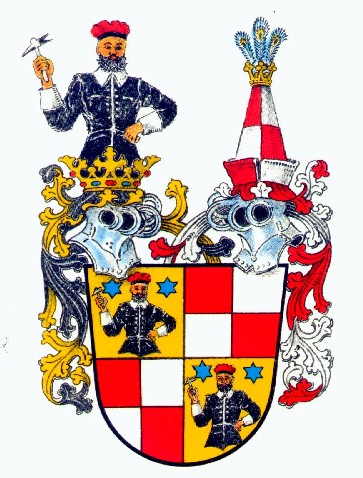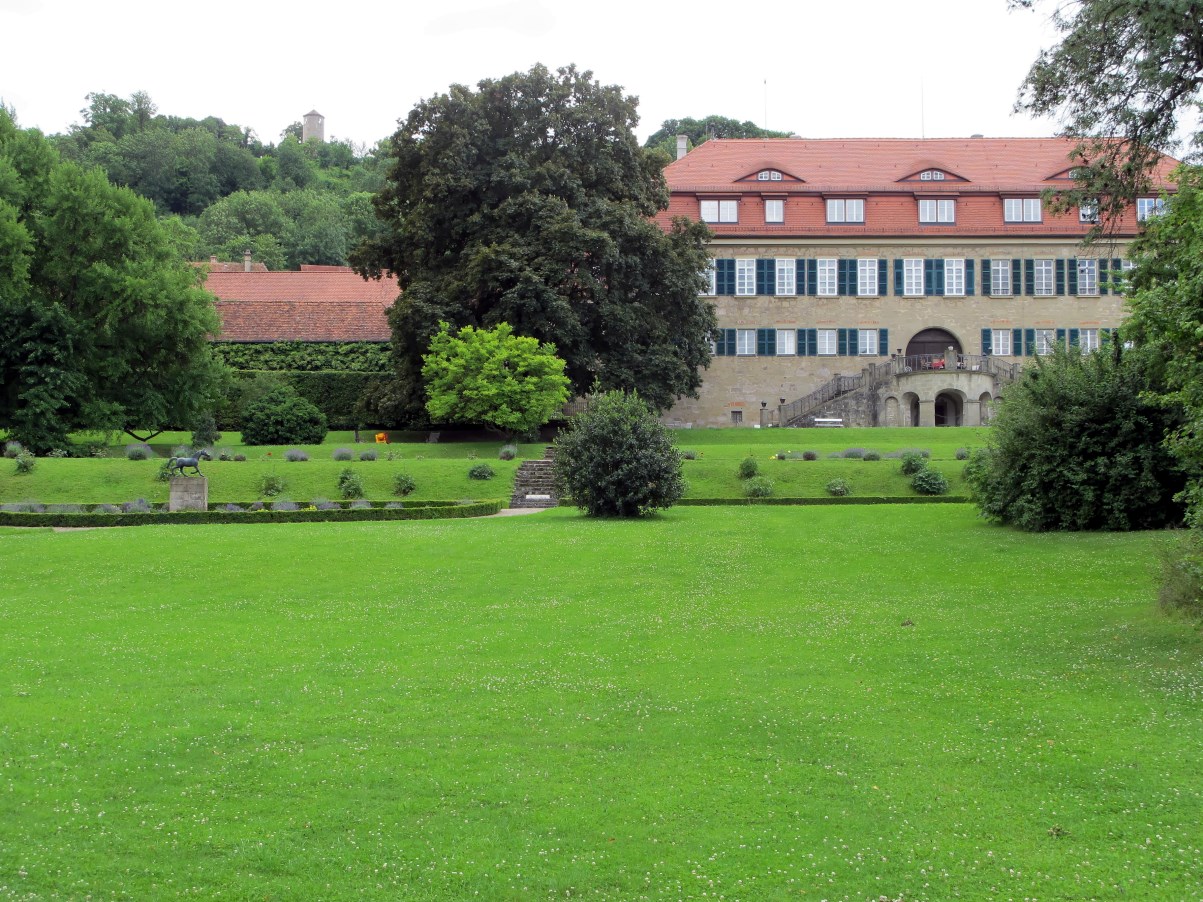|
Castell-Rüdenhausen
Castell-Rüdenhausen was a County in the region of Franconia in northern Bavaria of the Holy Roman Empire The Holy Roman Empire was a political entity in Western, Central, and Southern Europe that developed during the Early Middle Ages and continued until its dissolution in 1806 during the Napoleonic Wars. From the accession of Otto I in 962 ..., ruled by a branch of the Counts of Castell. It was created as a partition of Castell and in 1806, it was German Mediatisation, mediatised to Bavaria. A branch of the Princely House is the famous noble Faber-Castell family. Counts of Castell-Rüdenhausen (1597 - 1806) *Godfrey (1597 - 1635) *George Frederick (1635 - 1653) *Philip Godfrey (1653 - 1681) *John Frederick (1681 - 1749) *Frederick Louis (1749 - 1803) *Christian Frederick (previously Count of Castell-Castell) (1803 - 1806) (Mediatized) Counts of Castell-Rüdenhausen * Christian Frederick (1806 - 1850) * Wolfgang (1850-1901) (Mediatized) Princes of Castell-Rüd ... [...More Info...] [...Related Items...] OR: [Wikipedia] [Google] [Baidu] |
Counts Of Castell
The House of Castell is a German noble family of mediatised counts of the old Holy Roman Empire.Almanach de Gotha. 1910. Perthes, p. 107, 109, 120–1Deuxième Partie In 1901, the heads of the two family branches, ''Castell-Castell'' and ''Castell-Rüdenhausen'', were each granted the hereditary title of Prince by Luitpold, Prince Regent of Bavaria. History The family appears in 1057 with ''Robbrath de Castello''. The County of Castell was created in 1200, in the modern region of Franconia in northern Bavaria, Germany. Rulership of Castell was shared between the brothers Louis and Rupert II in 1223, and later with the brothers Albert II, Frederick II and Henry I in 1235. The County was partitioned into Elder and Younger lines in 1254, which were reunited in 1347 with the extinction of the Elder branch. Castell was repartitioned in 1597 into Castell-Remlingen and Castell-Rüdenhausen. When Count Wolfgang Theodoric of Castell-Castell (itself a partition of Castell-Remlingen) d ... [...More Info...] [...Related Items...] OR: [Wikipedia] [Google] [Baidu] |
Faber-Castell Family
The House of Faber-Castell, originating from Stein near Nuremberg, Germany, is the name of an entrepreneurial noble family, morganatic branch of the House of Castell-Rüdenhausen, which founded the Faber-Castell AG in 1761 and the Nürnberger Versicherung in 1884. A.W. Faber, the original name of the company, is the oldest company brand in the USA. History Founded in 1761 by Kasper Faber, AW Faber Bleystiftwerke made pencils. One of his successors was Johann Lothar, Freiherr von Faber; his granddaughter Baroness Ottilie married Alexander Graf von Castell-Rüdenhausen in 1898. From them originates the new company name Faber-Castell (Count Alexander changed his name to Alexander von Faber-Castell). In 1905, Alexander von Faber-Castell introduced the pencil mark "Castell" for particularly high quality pencils. Roland von Faber-Castell (1905–1978) was the last sole heir to the Faber-Castell fortune. The Count successfully merged the companies Faber-Castell and Johann Fab ... [...More Info...] [...Related Items...] OR: [Wikipedia] [Google] [Baidu] |
Castell (Germany)
Castell was a county of northern Bavaria, Germany, ruling a string of territories in the historical region of Franconia, both east and west of Würzburg. Little is known about the noble Counts of Castell, although they were the counts of Kreis Gerolzhofen, Regierungsbezirk, and Unterfranken of Bavaria. They were a member of the ''Fränkische Grafenkolleg'' ("Franconian Counts College"). The two main branches of the House of Castell were Protestant Castell-Remlingen (later split into Castell-Castell) and Protestant and Catholic Castell-Rüdenhausen. Castell was composed of three territories (''Flecken'') and 28 villages, with about 10,000 inhabitants at the time of mediatisation. The County of Castell joined Bavaria in 1806. Partitions of Castell *Castell-Remlingen (1597–1806) ** Castell-Castell (1668–1806) *Castell-Rüdenhausen Castell-Rüdenhausen was a County in the region of Franconia in northern Bavaria of the Holy Roman Empire The Holy Roman Empire was a politica ... [...More Info...] [...Related Items...] OR: [Wikipedia] [Google] [Baidu] |
German Mediatisation
German mediatisation (; german: deutsche Mediatisierung) was the major territorial restructuring that took place between 1802 and 1814 in Germany and the surrounding region by means of the mass mediatisation and secularisation of a large number of Imperial Estates. Most ecclesiastical principalities, free imperial cities, secular principalities, and other minor self-ruling entities of the Holy Roman Empire lost their independent status and were absorbed into the remaining states. By the end of the mediatisation process, the number of German states had been reduced from almost 300 to just 39. In the strict sense of the word, mediatisation consists in the subsumption of an immediate () state into another state, thus becoming ''mediate'' (), while generally leaving the dispossessed ruler with his private estates and a number of privileges and feudal rights, such as low justice. For convenience, historians use the term ''mediatisation'' for the entire restructuring process that t ... [...More Info...] [...Related Items...] OR: [Wikipedia] [Google] [Baidu] |
Castell-Castell
Castell-Castell was a county in the Holy Roman Empire, ruled by a branch of the Counts of Castell. It was established as a partition of Castell-Remlingen in 1668, and it was partitioned between itself and Castell in 1709. It annexed the County of Castell in 1772, and was mediatised to Bavaria in 1806.Genealogisches Handbuch des Adels, Fürstliche Häuser XVI. "Castell". C.A. Starke Verlag, 2001, pp. 187-190. (German). . Counts of Castell-Castell (1668–1806) *Wolfgang Theodoric (1668–1709) *Augustus Francis Frederick (1709–1767) reigned mutually with *Charles Frederick Gottlieb (Count of Castell-Remlingen) (1709–1717) and *Wolfgang George II (1709–1736) and *Christian Frederick Charles (Count of Castell-Rüdenhausen (1736–1773) *Albert Frederick Charles (1773–1806) mutually with *Christian Frederick (later Count of Castell-Rüdenhausen) (1773–1803) (Mediatized) Counts of Castell-Castell * Friedrich Ludwig (1810-1875) * Carl (1875-1886) * Friedrich Carl (1886-190 ... [...More Info...] [...Related Items...] OR: [Wikipedia] [Google] [Baidu] |
Franconia
Franconia (german: Franken, ; Franconian dialect: ''Franggn'' ; bar, Frankn) is a region of Germany, characterised by its culture and Franconian languages, Franconian dialect (German: ''Fränkisch''). The three Regierungsbezirk, administrative regions of Lower Franconia, Lower, Middle Franconia, Middle and Upper Franconia (largest cities, respectively: Würzburg, Nuremberg and Bamberg) in the Bavaria, State of Bavaria are part of the cultural region of Franconia, as are the adjacent East Franconian, Franconian-speaking South Thuringia, south of the Rennsteig ridge (largest city: Suhl), Heilbronn-Franconia (largest city: Schwäbisch Hall) in the state of Baden-Württemberg, and small parts of the state of Hesse. Those parts of the Vogtland lying in the state of Saxony (largest city: Plauen) are sometimes regarded as Franconian as well, because the Vogtlandian dialects are mostly East Franconian. The inhabitants of Saxon Vogtland, however, mostly do not consider themselves as Fran ... [...More Info...] [...Related Items...] OR: [Wikipedia] [Google] [Baidu] |
Bavaria
Bavaria ( ; ), officially the Free State of Bavaria (german: Freistaat Bayern, link=no ), is a state in the south-east of Germany. With an area of , Bavaria is the largest German state by land area, comprising roughly a fifth of the total land area of Germany. With over 13 million inhabitants, it is second in population only to North Rhine-Westphalia, but due to its large size its population density is below the German average. Bavaria's main cities are Munich (its capital and largest city and also the third largest city in Germany), Nuremberg, and Augsburg. The history of Bavaria includes its earliest settlement by Iron Age Celtic tribes, followed by the conquests of the Roman Empire in the 1st century BC, when the territory was incorporated into the provinces of Raetia and Noricum. It became the Duchy of Bavaria (a stem duchy) in the 6th century AD following the collapse of the Western Roman Empire. It was later incorporated into the Holy Roman Empire, be ... [...More Info...] [...Related Items...] OR: [Wikipedia] [Google] [Baidu] |
Holy Roman Empire
The Holy Roman Empire was a political entity in Western, Central, and Southern Europe that developed during the Early Middle Ages and continued until its dissolution in 1806 during the Napoleonic Wars. From the accession of Otto I in 962 until the twelfth century, the Empire was the most powerful monarchy in Europe. Andrew Holt characterizes it as "perhaps the most powerful European state of the Middle Ages". The functioning of government depended on the harmonic cooperation (dubbed ''consensual rulership'' by Bernd Schneidmüller) between monarch and vassals but this harmony was disturbed during the Salian period. The empire reached the apex of territorial expansion and power under the House of Hohenstaufen in the mid-thirteenth century, but overextending led to partial collapse. On 25 December 800, Pope Leo III crowned the Frankish king Charlemagne as emperor, reviving the title in Western Europe, more than three centuries after the fall of the earlier ancient Weste ... [...More Info...] [...Related Items...] OR: [Wikipedia] [Google] [Baidu] |
Schloss Rüdenhausen
''Schloss'' (; pl. ''Schlösser''), formerly written ''Schloß'', is the German term for a building similar to a château, palace, or manor house. Related terms appear in several Germanic languages. In the Scandinavian languages, the cognate word ''slot''/''slott'' is normally used for what in English could be either a palace or a castle (instead of words in rarer use such as ''palats''/''palæ'', ''kastell'', or ''borg''). In Dutch, the word ''slot'' is considered to be more archaic. Nowadays, one commonly uses ''paleis'' or ''kasteel''. But in English, the term does not appear, for instance, in the United Kingdom, this type of structure would be known as a stately home or country house. Most ''Schlösser'' were built after the Middle Ages as residences for the nobility, not as true fortresses, although originally, they often were fortified. The usual German term for a true castle is ''burg'', that for a fortress is ''festung'', and — the slightly more archaic term — ... [...More Info...] [...Related Items...] OR: [Wikipedia] [Google] [Baidu] |
Isenburg-Büdingen
Isenburg-Büdingen was a County of southern Hesse, Germany, located in Büdingen. It was originally a part of the County of Isenburg. There were two different Counties of the same name. The first (1341–1511) was a partition of Isenburg-Cleberg, and was partitioned into Isenburg-Büdingen-Birstein and Isenburg-Ronneburg in 1511. The second (1628–1806) was a partition of Isenburg-Büdingen-Birstein. It was partitioned between itself, Isenburg-Meerholz and Isenburg-Wächtersbach in 1673, and was mediatised to Isenburg in 1806. In 1816 Isenburg was partitioned between the Grand Duchy of Hesse-Darmstadt and the Electorate of Hesse-Kassel. Count Ernest Casimir (1801-1848) was elevated to the rank of prince by Louis II, Grand Duke of Hesse, in 1840. Since then, the name of the branch is spelled ''Ysenburg and Büdingen'', to distinguish it from the princes of Isenburg from the Isenburg-Birstein Isenburg-Birstein was the name of two German historical states centred on Birstein i ... [...More Info...] [...Related Items...] OR: [Wikipedia] [Google] [Baidu] |




